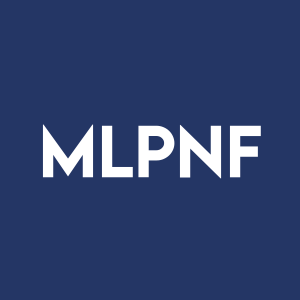Millennial Potash Completes Positive PEA with After-Tax NPV(10) of $1.07B and IRR of 32.6% for its Banio Potash Project
Vancouver, British Columbia--(Newsfile Corp. - April 23, 2024) - Millennial Potash Corp. (TSXV: MLP) (OTCQB: MLPNF) (FSE: X0D) ("MLP", "Millennial" or the "Company") is pleased to announce the completion of a Preliminary Economic Assessment ("PEA") on its Banio Potash Project. The PEA was completed by Micon International ("Micon") in partnership with Agapito Associates Inc. ("Agapito") and yielded the following highlights:
- Optimal annual production rate of 800,000 Tonnes per Year (TPY) of primarily granular K60 Muriate of Potash (gMOP)
$1.07B after-tax NPV(10) and32.6% IRR$480M initial CAPEX estimate, including$62M in Contingency- Estimated
$61 /T gMOP OPEX
Positive evaluations also modelled for 400,000 TPY and 600,000 TPY were also completed as part of the PEA. All dollar amounts are in US dollars unless stated otherwise. Highlights of the PEA are presented in Table 1.
Farhad Abasov, Millennial's Chair, commented "We are extremely pleased with the results of the PEA on the Banio Potash Project and it has confirmed our belief that the project is very robust and has significant economic potential. The CAPEX for the 800,000 TPY optimal case is a very competitive
Table 1 PEA Highlights
| Line Item | Unit | |
| Production Rate MOP | t/a | 800 k TPY |
| Total Initial CAPEX | US$ million | 480 |
| Capital Intensity | US$/t | 600 |
| Total OPEX LoM | US$/t | 61 |
| Pre-Tax NPV10 | US$ million | 1,680 |
| Pre-Tax IRR | % | 41 |
| Post-Tax NPV10 | US$ million | 1,071 |
| Post-Tax IRR | % | 32.6 |
| gMOP Price (Avg-25 years) | US$/t | 387 |
| Shipping Cost-Brazil | US$/t | 22 |
| NaCl price ( | US$/t | 100 |
| Payback | Years | 1.4 |
PEA Outline
The Banio Potash Project PEA is based on the Mineral Resource Estimate completed by ERCOSPLAN early in 2024 (see Press Release dated Jan. 16, 2024). The MRE is comprised of an Indicated Mineral Resource Estimate of 657M tonnes grading
The PEA utilizes both the Indicated and Inferred Mineral Resources in its mining production scenario. The PEA is preliminary in nature, and includes Inferred Mineral Resources that are considered too speculative geologically to have the economic considerations applied to them that would enable them to be categorized as mineral reserves. There is no certainty that the PEA will be realized.
The Inferred and Indicated Resources include up to 10 evaporite seams rich in carnallite, sylvite and halite where the cumulative thickness of the potentially exploitable potash-rich seams is in excess of 70m.
The mining method deemed most appropriate for the potential of an economic project at Banio is solution mining. The mining scenario includes the development of solution mining caverns at a wellfield at the North Target with enriched brine pumped via pipeline to a processing plant facility at the town of Mayumba 50 km north of the project area. Processing via evaporation and crystallization followed by drying and compaction producing K60 (>
Capital (CAPEX) and Operating Expenses (OPEX)
CAPEX and OPEX cost parameters have been based on benchmark data and are order of magnitude estimates with an accuracy of ±
Mine/wellfield Initial CAPEX is dominated by the 68 wells/caverns to be developed in the first two years of construction, development of brine pipelines, and the rehabilitation of a road from the mining site to Mayumba. Replacement well/cavern development has been allocated to Sustaining Capex and total LOM planned caverns is 370.
Table 2 Summary of Initial CAPEX
| Parameter | 800 k TPY |
| Mine wellfield | 123,250 |
| Processing plant | 190,416 |
| Infrastructure, G&A, Escalation | 104,216 |
| Contingency ( | 62,198 |
| Total | 480,080 |
The processing plant forms the bulk of the Initial CAPEX at
The Sustaining CAPEX estimate is dominated by expenditures in the wellfield/caverns. The initial caverns are projected to have a production life of approximately 11 years and replacements will be required every 7-10 years. Every 7-10 years an additional 51 wells/cavern will be developed to maintain the 800,000 TPY production rate. Additional Sustaining CAPEX items include piping for the wellfield as well as fresh-water infrastructure expansions at the wellfield and road extensions have been accounted for. The Sustaining CAPEX is estimated at
A summary of OPEX costs for the 800,000 TPY production scenario are presented in Table 3. The main OPEX items are natural gas which will feed a Combined Heat and Power plant for the processing plant and the wellfield, and maintenance costs for both the wellfield and the processing plant. Labour is also a significant cost and is comprised of 22 non-Gabonese and 388 Gabonese nationals for a total of 410 employees.
Table 3 Summary of OPEX
| Item | Description | 800 k TPY |
| Natural Gas | Based on US | 16.380 |
| Maintenance | Based on | 15.00 |
| Labour | 410 Employees, | 9.76 |
| Consulting | Ongoing | 1.00 |
| Legal | Contract Drafting etc. | 1.00 |
| Marketing | MOP and Salt Products | 1.25 |
| Port Fees | Estimated US | 1.60 |
| Product Trucking | Estimated US | 1.60 |
| Social Costs | Sponsor Local Projects | 0.50 |
| Diesel | Estimated US | 0.24 |
| Demineralized Water | For Steam Raising | 0.42 |
| Total OPEX US$ million /a | 48.7 | |
| Unit Cost US$/t MOP | 61 | |
Economic Analysis
The economic analysis considered the optimal case production rate of 800,000 TPYof MOP as well as two alternative scenarios at 600,000 TPY and 400,000 TPY. A Discounted Cash Flow Model (DCFM) was constructed with the following assumptions:
- All values, both revenue and costs are in real terms, flat lined during the Project time frame, with no inflation. The cash flow is then discounted for the NPV calculation;
- The model assumes a two-year construction phase followed by 1 year ramp-up production phase;
- Commercial production is taken as
60% of nameplate capacity and it is assumed that this occurs after a 12 month ramp-up period; - Payback period is taken as the period to transition from cumulative cashflow negative to cumulative cashflow positive after the date of commercial production;
- As a consequence, Initial CAPEX is regarded as the first two years of construction in addition to the mine cavern construction and ramp-up period;
- Once production hits full capacity CAPEX turns into Sustaining CAPEX and OPEX begins. Everything previously being classed as "Initial CAPEX";
- Although the mine life or LOM continues beyond a 25-year time frame in each of the cases, the NPV and IRR calculations only include the first 25 years of the Project;
- All effects of stockpiles and lagging sales have been ignored and simplified to production equals sales; and,
- Brazil is the assumed market. The assumption is that Brazil would absorb the production, which de-risks this parameter in the assumption.
The main input parameters for the DCFM are outlined in Table 4:
Table 4 Summary of DCFM Inputs
| Input Parameters | Unit | Value |
| Project Commencement | Date | 01/01/2024 |
| Valuation Base Date | Date | 01/01/2027 |
| gMOP K60 CFR Brazil (25-year average) | US$/t | 387 |
| Shipping Cost CFR to Brazil | US$/t | 22 |
| NaCl | US$/t | 100 |
| Shipping Cost NaCl | US$/t | 22 |
| Royalty | % | |
| Corporate Tax (CIT) | % | |
| Escalation Rate | % | |
| Contingency for CAPEX | % | |
| Plant Recovery | % | |
| Plant Product MOP Quality | % | |
| Discount Rate | % | |
| NPV calculation | Years | 25 |
The DCFM indicates that at a production rate of 800,000 TPY of granular MOP the Banio Potash Project has the potential to be a compelling project. A summary of the DCFM conclusions is outlined in Table 5 indicating a robust Post-Tax NPV10 of 1.07B and a sound IRR of
Table 5 Summary of DCFM Results
| Line item | Unit | Optimal Case (800 k TPY) |
| Initial CAPEX | US$ million | 480 |
| OPEX | US$ | 61/tonne |
| Pre-Tax NPV10 | US$ million | 1,680 |
| Pre-Tax IRR | % | 41 |
| Post-Tax NPV10 | US$ million | 1,071 |
| Post-Tax IRR | % | 32.6 |
| Payback Period | Years | 1.4 |
Micon has recommended additional drilling on the project to add to the existing resources and to hopefully upgrade Indicated and Inferred Mineral Resources to the Measured and Indicated designations in preparation for a Feasibility Study. Additional engineering studies such as dissolution testwork, geotechnical studies, a high purity NaCl market study as well as an updated standard and granular MOP study to determine demand in Africa for either product. MLP continues to work with local communities and the Gabonese government on infrastructure initiatives including the construction of a deep-water port and the gas-powered plant at Mayumba.
The information in this news release has been reviewed and approved by Liz de Klerk, Pri.Sci.Nat.,FIMM, and Peter J. MacLean, Ph.D., P. Geo, Director of the Company, both of whom are Qualified Persons as that term is defined in National Instrument 43-101.
To find out more about Millennial Potash Corp. please contact Investor Relations at (604) 662-8184 or email at info@millennialpotashcorp.com.
MILLENNIAL POTASH CORP.
"Farhad Abasov"
Chair of the Board of Directors
Neither the TSX Venture Exchange nor its Regulation Services Provider (as that term is defined in the policies of the TSX Venture Exchange) accepts responsibility for the adequacy or accuracy of this release.
This document may contain certain "Forward-Looking Statements" within the meaning of the United States Private Securities Litigation Reform Act of 1995 and applicable Canadian securities laws. When used in this news release, the words "anticipate", "believe", "estimate", "expect", "target, "plan" or "planned", "forecast", "intend", "may", "schedule" and similar words or expressions identify forward-looking statements or information. These forward-looking statements or information may relate to future prices of commodities, accuracy of mineral or resource exploration activity, reserves or resources, regulatory or government requirements or approvals including approvals of title and mining rights or licenses and environmental (including land or water use), local community or indigenous community approvals, the reliability of third party information, continued access to mineral properties or infrastructure, changes in laws, rules and regulations in Gabon or any other jurisdiction which may impact upon the Company or its properties or the commercial exploitation of those properties, currency risks including the exchange rate of USD$ for Cdn$ or CFA or other currencies, fluctuations in the market for potash or potash related products, changes in exploration costs and government royalties, export policies or taxes in Gabon or any other jurisdiction and other factors or information. The Company's current plans, expectations and intentions with respect to development of its business and of the Banio Potash Project may be impacted by economic uncertainties arising out of any pandemic or by the impact of current financial and other market conditions on its ability to secure further financing or funding of the Banio Potash Project. Such statements represent the Company's current views with respect to future events and are necessarily based upon a number of assumptions and estimates that, while considered reasonable by the Company, are inherently subject to significant business, economic, competitive, political, environmental and social risks, contingencies and uncertainties. Many factors, both known and unknown, could cause results, performance or achievements to be materially different from the results, performance or achievements that are or may be expressed or implied by such forward-looking statements. The Company does not intend, and does not assume any obligation, to update these forward-looking statements or information to reflect changes in assumptions or changes in circumstances or any other events affecting such statements and information other than as required by applicable laws, rules and regulations.

To view the source version of this press release, please visit https://www.newsfilecorp.com/release/206211







